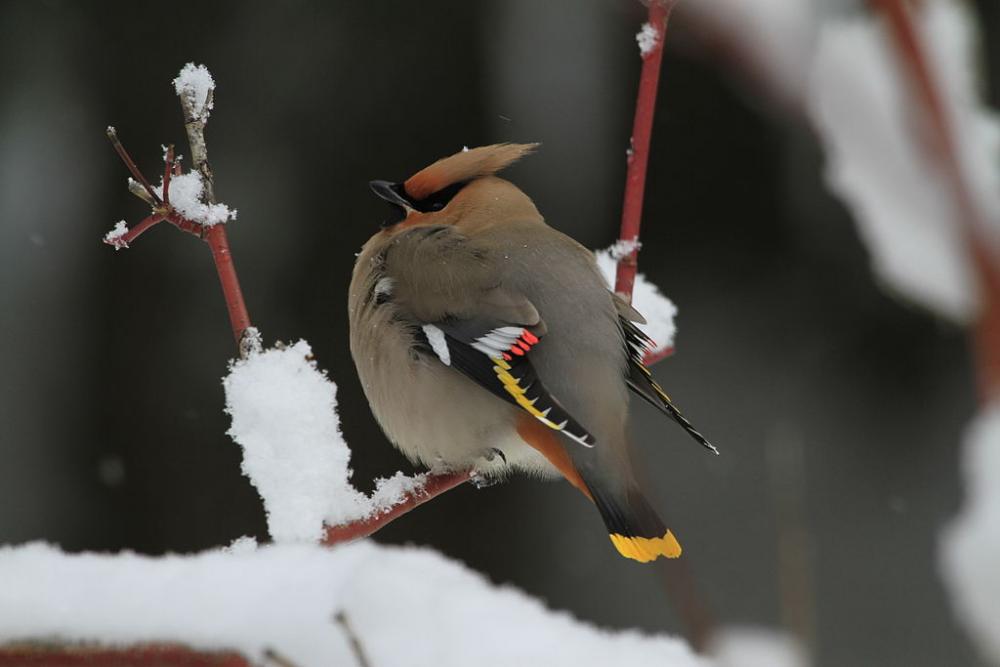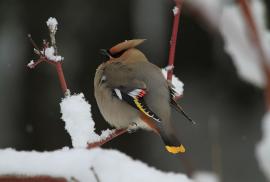Guide to Boreal Birds
Overview
Because most of its breeding range is in remote and uninhabited regions, most birders only see the species in winter when flocks move south and east across southern Canada and the northern U.S. However, this species forms large winter flocks in the northern United States only about once a decade. Its occasional erratic movements southward in winter are thought to be caused by food shortages in the North. When it appears, it feeds on berries. One hundred or more of these birds perched in the top of a leafless tree in midwinter, calling shrilly, is an unforgettable event. Highly social, Bohemian Waxwings usually move about in tight formations, descending en masse on a clump of bushes and quickly stripping them of fruit. Since such plantings are typically around buildings in cities and towns, large flocks of the species are now often found in urban areas of northern towns. Waxwings seem to be particularly susceptible to pesticides and it is unclear how the widespread application of pesticides to industrial boreal forests will impact Bohemian Waxwing populations.
Description
7 1/2 -8 1/2" (19-22 cm). A sleek, gray-brown, crested bird. Similar to Cedar Waxwing but larger, grayer, and with conspicuous white wing patches and rusty (not white) undertail coverts.
Voice
High-pitched, lisping seeee, harsher and more grating than call of Cedar Waxwing.
Nesting
4-6 pale blue eggs, heavily spotted and scrawled with black, placed in a loose, flat saucer of twigs, lichens, and grass in a conifer.
Habitat
Open coniferous forests.
Range/Migration
Breeds from Alaska, Yukon, Mackenzie, Saskatchewan, and Manitoba south to central Washington, northern Idaho, and northwestern Montana. Wanders irregularly farther south and east during winter. Also in Eurasia.



